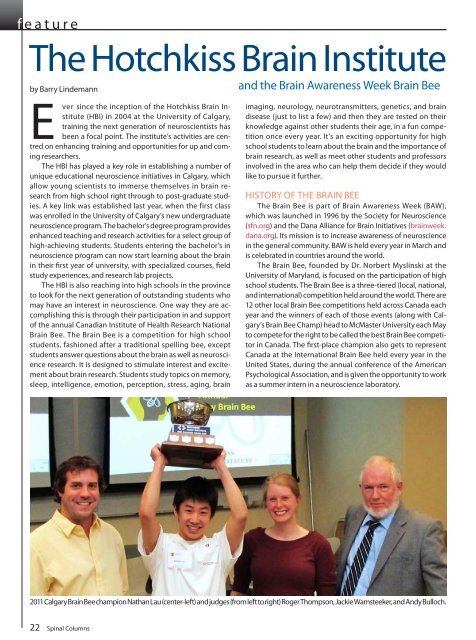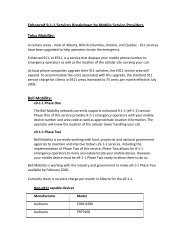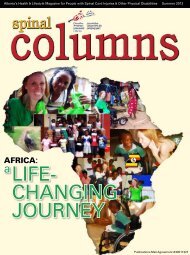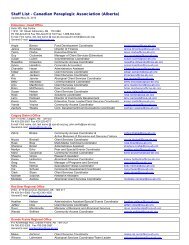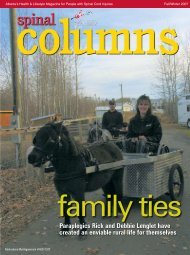SETTING SAIL - Canadian Paraplegic Association (Alberta)
SETTING SAIL - Canadian Paraplegic Association (Alberta)
SETTING SAIL - Canadian Paraplegic Association (Alberta)
- No tags were found...
Create successful ePaper yourself
Turn your PDF publications into a flip-book with our unique Google optimized e-Paper software.
f eatureThe Hotchkiss Brain Instituteby Barry LindemannEver since the inception of the Hotchkiss Brain Institute(HBI) in 2004 at the University of Calgary,training the next generation of neuroscientists hasbeen a focal point. The institute’s activities are centredon enhancing training and opportunities for up and comingresearchers.The HBI has played a key role in establishing a number ofunique educational neuroscience initiatives in Calgary, whichallow young scientists to immerse themselves in brain researchfrom high school right through to post-graduate studies.A key link was established last year, when the first classwas enrolled in the University of Calgary’s new undergraduateneuroscience program. The bachelor’s degree program providesenhanced teaching and research activities for a select group ofhigh-achieving students. Students entering the bachelor’s inneuroscience program can now start learning about the brainin their first year of university, with specialized courses, fieldstudy experiences, and research lab projects.The HBI is also reaching into high schools in the provinceto look for the next generation of outstanding students whomay have an interest in neuroscience. One way they are accomplishingthis is through their participation in and supportof the annual <strong>Canadian</strong> Institute of Health Research NationalBrain Bee. The Brain Bee is a competition for high schoolstudents, fashioned after a traditional spelling bee, exceptstudents answer questions about the brain as well as neuroscienceresearch. It is designed to stimulate interest and excitementabout brain research. Students study topics on memory,sleep, intelligence, emotion, perception, stress, aging, brainand the Brain Awareness Week Brain Beeimaging, neurology, neurotransmitters, genetics, and braindisease (just to list a few) and then they are tested on theirknowledge against other students their age, in a fun competitiononce every year. It’s an exciting opportunity for highschool students to learn about the brain and the importance ofbrain research, as well as meet other students and professorsinvolved in the area who can help them decide if they wouldlike to pursue it further.HISTORY OF THE BRAIN BEEThe Brain Bee is part of Brain Awareness Week (BAW),which was launched in 1996 by the Society for Neuroscience(sfn.org) and the Dana Alliance for Brain Initiatives (brainweek.dana.org). Its mission is to increase awareness of neurosciencein the general community. BAW is held every year in March andis celebrated in countries around the world.The Brain Bee, founded by Dr. Norbert Myslinski at theUniversity of Maryland, is focused on the participation of highschool students. The Brain Bee is a three-tiered (local, national,and international) competition held around the world. There are12 other local Brain Bee competitions held across Canada eachyear and the winners of each of those events (along with Calgary’sBrain Bee Champ) head to McMaster University each Mayto compete for the right to be called the best Brain Bee competitorin Canada. The first-place champion also gets to representCanada at the International Brain Bee held every year in theUnited States, during the annual conference of the AmericanPsychological <strong>Association</strong>, and is given the opportunity to workas a summer intern in a neuroscience laboratory.2011 Calgary Brain Bee champion Nathan Lau (center-left) and judges (from left to right) Roger Thompson, Jackie Wamsteeker, and Andy Bulloch.22 Spinal Columns


